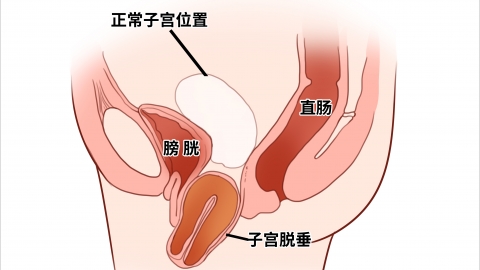What causes uterine prolapse?
Uterine prolapse generally refers to the descent of the uterus. In most cases, uterine prolapse may be caused by aging-related relaxation of the pelvic floor muscles, damage to pelvic tissues during childbirth, chronic coughing, long-term constipation, or prolapse of other pelvic organs. It is recommended to seek timely medical consultation, identify the underlying cause, and improve the condition under a doctor's guidance through general treatments, medication, or surgical interventions. A detailed explanation is as follows:

1. Pelvic Floor Muscle Relaxation Due to Aging: With increasing age, women may experience reduced elasticity and weakened strength of the pelvic floor muscles, which can no longer adequately support the uterus, leading to prolapse. Daily Kegel exercises are recommended, involving contraction of the pelvic floor muscles for 3–5 seconds each time, followed by relaxation and repetition. It is advised to perform these exercises for 15–20 minutes daily to enhance the supporting strength of the pelvic floor muscles. Pelvic floor rehabilitation devices can also be used as an adjunct to improve muscle function.
2. Pelvic Tissue Damage During Childbirth: Overstretching or tearing of the pelvic muscles and ligaments during delivery without timely repair can weaken the supportive structures of the uterus, causing prolapse. Early postpartum pelvic floor muscle rehabilitation, such as Kegel exercises, is recommended.
3. Chronic Cough: Prolonged coughing continuously increases abdominal pressure, pushing the uterus downward and resulting in prolapse. The primary condition should be treated first, and medications such as dextromethorphan hydrobromide oral solution, pentoxifylline tablets, or愈酚伪麻oral solution may be taken under medical guidance to alleviate cough symptoms.
4. Long-Term Constipation: Excessive straining during bowel movements repeatedly elevates abdominal pressure, gradually causing the uterus to descend. Dietary adjustments are recommended, including increased consumption of fiber-rich vegetables and fruits, with a daily water intake of 1500–2000 mL. If constipation is severe, medications such as lactulose oral solution, polyethylene glycol 4000 powder, or bisacodyl enteric-coated tablets may be used under medical supervision to promote bowel movements and reduce increases in abdominal pressure.
5. Pelvic Organ Prolapse: Prolapse of other pelvic organs such as the bladder or rectum can pull or compress the uterus, leading to uterine prolapse. For mild symptoms, a pessary can be used to support the uterus and relieve discomfort. If the prolapse is significant, laparoscopic suspension of the pelvic organs can be performed to reposition and fix the prolapsed organs, restoring normal pelvic anatomy.
Daily activities should avoid heavy physical labor and actions that increase abdominal pressure, such as bending over or lifting heavy objects. Maintain a regular sleep schedule, avoid staying up late, and engage in mild exercises such as walking to improve physical fitness and support the health of pelvic tissues.




